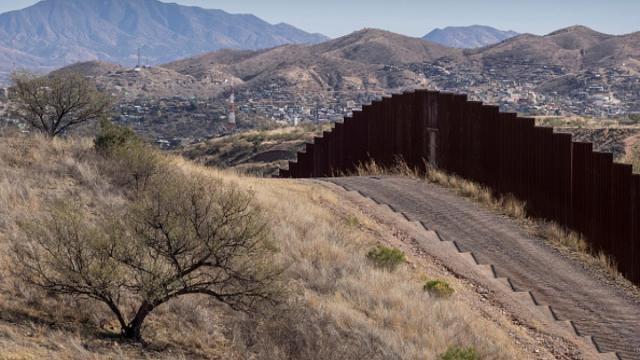Work on the US Mexico Border wall is proceeding but the authorities waived aside laws meant to preserve the environment and Native American cultural sites. In the opinion of environmentalists, the new sections of the wall would be of steel fencing high enough to block many wildlife corridors. The border wall would affect the habitat of the American jaguars whose numbers have dwindled.
The absence of normal corridors would be the end of the road for them, they suggest. The animals would be isolated from their larger populations in northern Mexico and it would be a loss for the United States.
The border wall was a campaign promise by Donald Trump in 2016. He wanted it to prevent the entry of illegal immigrants and drug smugglers. However, work on it is slow and the next election is around the corner.
Construction of US-Mexico border wall proceeds despite coronavirus pandemic https://t.co/NFCgppVn51
— The Guardian (@guardian) March 22, 2020
The Desert Sun says the waivers published in the Federal Register relate to different sections of the border in the states through which the wall passes. The decision about the waiver is apparently in response to an executive order by President Donald Trump. The intention was to tighten the border with Mexico. As a result, Homeland Security got the authority to bypass several laws like the Endangered Species Act.
The Jaguars used to roam from California to Louisiana. The U.S. Fish and Wildlife Service confirms this. However, today they are on the list of endangered species.
Justification for the border wall
U.S. Customs and Border Protection CBP said the fence was necessary to check the smuggling of people and drugs into the United States.
CBP also clarified that certain individuals, groups, and criminal organizations used the border as drug smuggling corridors. Hence, there was a need for some sort of a fence to thwart their designs.
The Department of Homeland Security has approved 177 miles of border fence construction, in the process waiving several dozen laws meant to protect the environment and preserve Native American cultural sites. https://t.co/gdV6pFabYk
— The Desert Sun (@MyDesert) March 21, 2020
The Desert Sun argues that such claims do not hold water.
They are exaggerated and there is no justification for new fences. There are heavily trafficked areas already identified and locked down. The figures reveal that there is a decline in the number of undocumented migrants. In the fiscal year 2000, the number was in excess of 1.6 million. They tried to cross over illegally into America. That number dropped substantially by 2018, without the proposed US Mexico Border wall. Obviously, there are objections from certain quarters. This is especially true when issues like preservation of the environment and protection of wildlife are involved.
Mexico border wall an example of reckless border policy
According to The Arizona Public Media, those who care for the environment describe the US Mexico Border wall as another example of reckless border policy with big consequences for wildlife.
The proposed bollard style construction would have an adverse effect on free movement of wildlife and rob them of their habitat. The Department of Homeland Security says it is necessary to check illegal entry of people and drugs. Therefore, the projects have to go ahead.
However, a conservation advocate explains that walls are superfluous. The terrain is rugged and there is very little human activity. Hence, previous administrations did not go in for any significant infrastructure there. It would have been not only expensive but also an engineering nightmare. North American jaguars live there and the existing pathways help them to connect with habitat in Mexico. The jaguars will no longer be able to move out once the border wall comes up.
The border wall was to check illegal entry
America shares a long boundary with Mexico. It has been there for ages and has given way at places. Moreover, the border passes through natural barriers like large bodies of water and mountainous terrain. In spite of that, illegal migrants cross over in search of a better life. There were drug smugglers as well. They innovated to evade the border patrol and carry on their nefarious activities. The Trump administration defined rigid specifications for the border wall and prototypes were approved before construction work started. Donald Trump wanted to build a wall, which would remain as a deterrent for a long time.
![Jaguars in northern Pantanal. [Image source/Wolves201 Wikimedia Commons] Jaguars in northern Pantanal. [Image source/Wolves201 Wikimedia Commons]](https://staticr1.blastingcdn.com/media/photogallery/2020/3/22/660x290/b_502x220x82/jaguars-in-northern-pantanal-image-sourcewolves201-wikimedia-commons_2423441.jpg)



